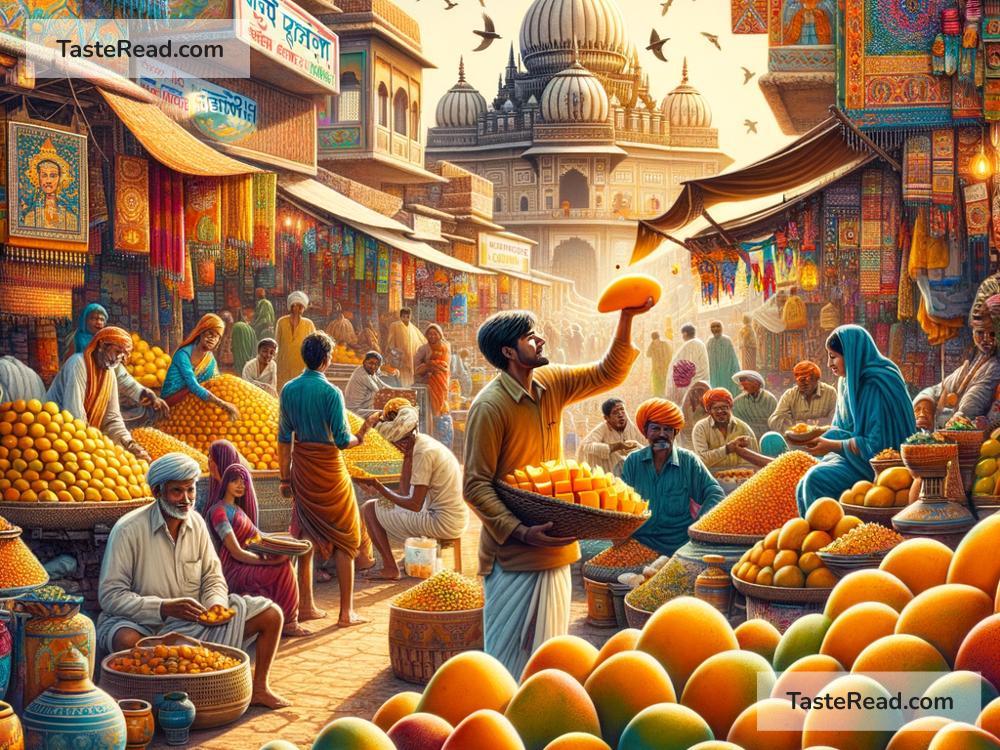The Fascinating History of Mangoes in Indian Culture
The mango, often called the “King of Fruits,” has a special place in the hearts and homes of people in India. It is a fruit that is not only loved for its sweetness and flavor but also valued for its cultural, religious, and historical significance. This tropical fruit has been a symbol of abundance, prosperity, and love for centuries. Let’s dive into the fascinating history of mangoes in Indian culture and their journey to becoming one of the most beloved fruits in the country.
The Origins of Mangoes in India
Mangoes are believed to have originated in the Indian subcontinent around 4,000 years ago. Historical evidence shows that mango trees were cultivated in India long before many other civilizations came to know about this fruit. Ancient texts mention mangoes as an important part of daily life, and they were prized for their taste and nutritional value.
The Sanskrit word for mango is “Amra” or “Amraphala,” appearing in ancient scriptures such as the Vedas and Puranas. These texts often praised mangoes for their sweetness and health benefits, referring to them as a fruit that could bring joy to the soul. Over time, the mango became not just a food item but a cultural icon in India.
Mangoes in Mythology and Religion
In Indian mythology, mangoes hold a divine status and are often associated with gods and goddesses. One popular story from Hindu mythology tells of Lord Shiva gifting mangoes to his wife, Goddess Parvati. The mango, in this tale, symbolized eternal love and happiness. Similarly, Lord Ganesha, the Hindu god of wisdom and prosperity, is often depicted holding mangoes as a symbol of wealth and success.
Mangoes also play a role in Indian spiritual practices. Mango leaves, known as “Aam ke Patte,” are considered sacred and are often used for decorating the entrance of homes, temples, and prayer spaces during festivals and ceremonies. This tradition symbolizes purity, positivity, and the welcoming of good fortune.
The Mango’s Royal Connection
Mangoes have long been associated with royalty in India. During the Mughal era, the emperors were known for their love of mangoes, and they transformed the fruit into a subject of royal indulgence. Emperor Akbar, in particular, is famous for planting over 100,000 mango trees in a place he called Lakhi Bagh near modern-day Uttar Pradesh. He valued mangoes not only for their flavor but also as a gift to his people, enhancing the kingdom’s self-sufficiency.
Another popular story of mangoes in the royal court comes from Emperor Jahangir, who was captivated by the taste of Dasheri mangoes. Many varieties of mangoes we enjoy today, such as Alphonso, Langra, and Kesar, were developed during this period by skilled gardeners who focused on cultivating the finest fruit for the royal table.
Mangoes as a Cultural Symbol
Over time, mangoes have become an important part of Indian art, literature, and folklore. The shape of the mango inspired the famous paisley design, which is widely used in Indian textiles, jewelry, and decorations. The mango motif remains one of the most recognizable symbols of Indian heritage, representing beauty and prosperity.
In literature, poets have often described their love for mangoes. For instance, Rabindranath Tagore, the Nobel Prize-winning Indian poet, frequently mentioned mango trees in his works, symbolizing nature’s abundance and the simple joys of life. Folk songs from different regions of India also celebrate mangoes, describing their sweetness and importance during the hot summer months.
A Fruit That Brings People Together
For Indians, mangoes are more than just a fruit—they are a reason to celebrate. During summer, when mangoes are in season, families and friends come together to enjoy this delicious fruit. Traditional recipes such as aamras (mango pulp), mango chutney, pickles, and shakes are prepared, showcasing the fruit’s versatility. Mango festivals are held across the country, where farmers present different varieties, and people gather to experience the unique flavors.
In India, mangoes are not only consumed fresh but also preserved for the months ahead. Mango pickles, made with raw green mangoes, are a favorite in households, especially in north India. These pickles are tangy, spicy, and can be stored for months, making them a way to enjoy mangoes even when they are out of season.
The Global Impact of Indian Mangoes
Indian mangoes are famous worldwide for their rich flavor and unique aroma. Varieties like Alphonso—a sweet, golden-yellow mango—are exported to many countries and are highly sought after. Indian mangoes have played a role in introducing the rest of the world to this incredible fruit, spreading joy across cultures and borders.
In recent years, the mango has become a symbol of India’s agricultural pride, with farmers working to preserve famous mango varieties while developing new ones. Mango cultivation in India contributes significantly to the economy, bringing livelihoods to millions of farmers.
Conclusion
The history of mangoes in Indian culture is a story of love, tradition, and connection. From its mention in ancient texts to its presence at royal feasts and modern-day festivals, the mango has been more than just a fruit—it has been a symbol of India’s vibrant heritage. Whether enjoyed fresh in summer or preserved in the form of pickles and chutneys, mangoes continue to unite people and bring joy to their lives. So, the next time you bite into a juicy slice of mango, remember that you’re experiencing a piece of history that stretches back thousands of years, all the way to the roots of Indian culture.


